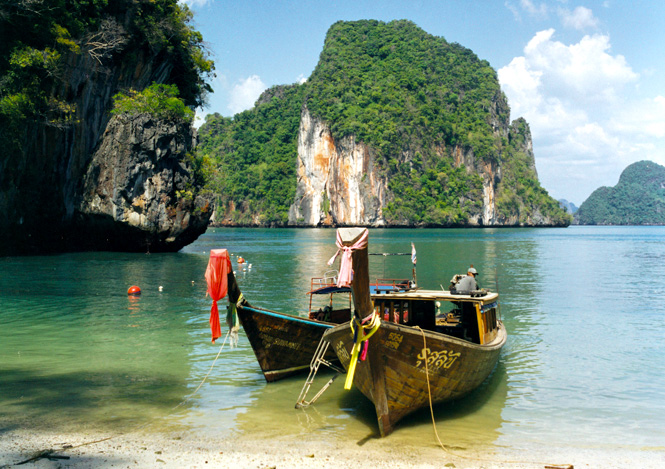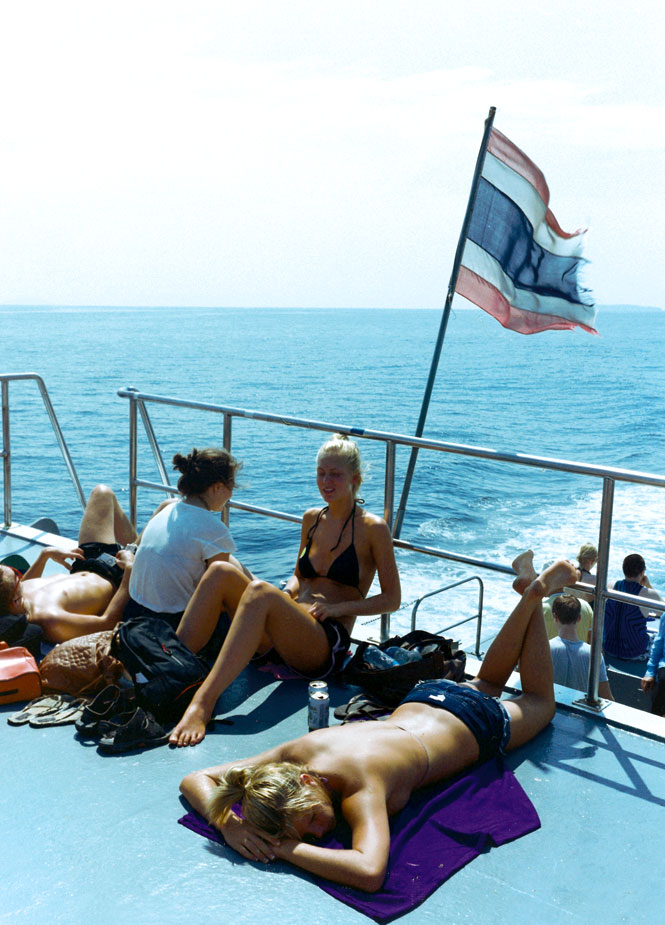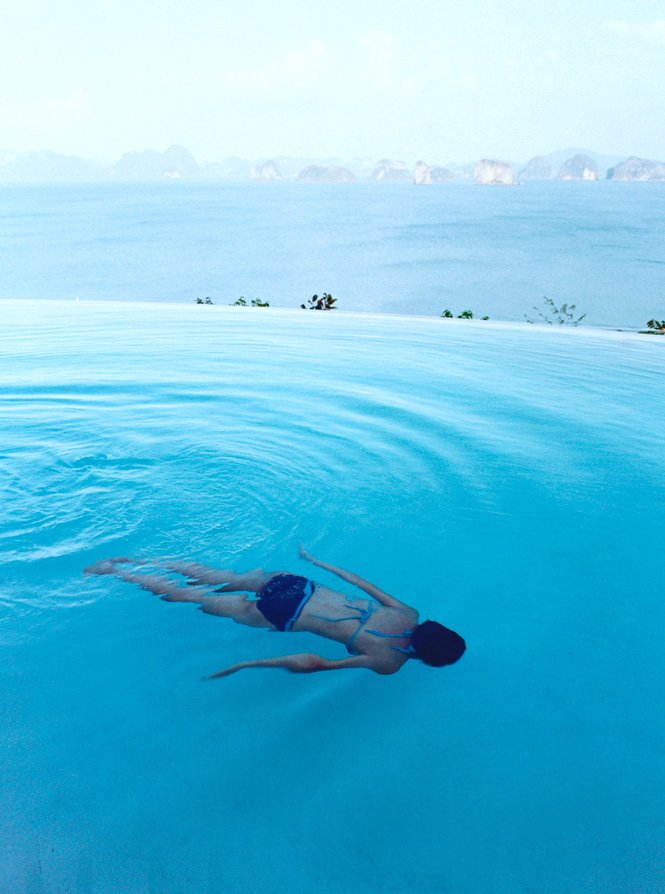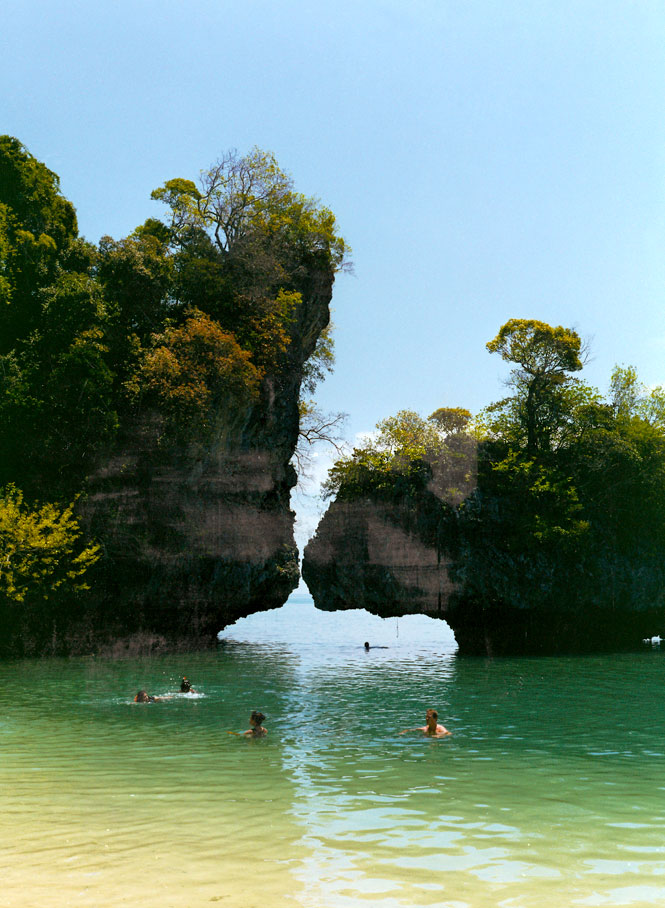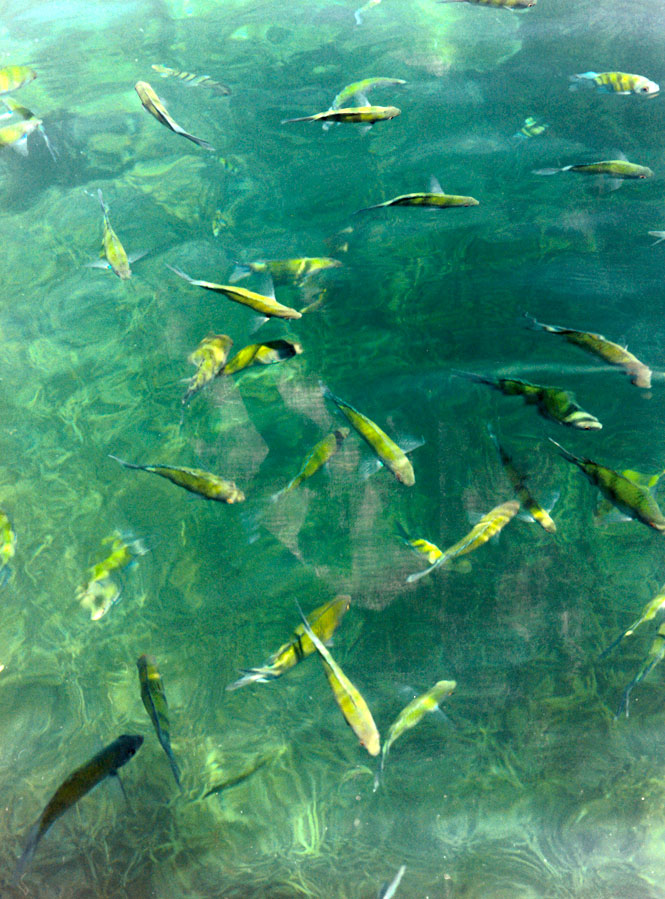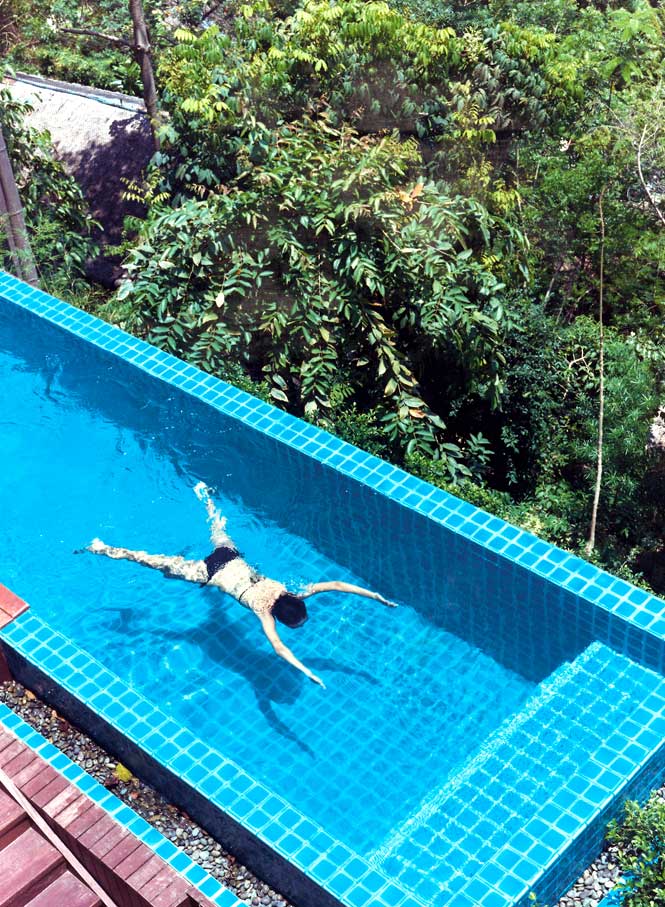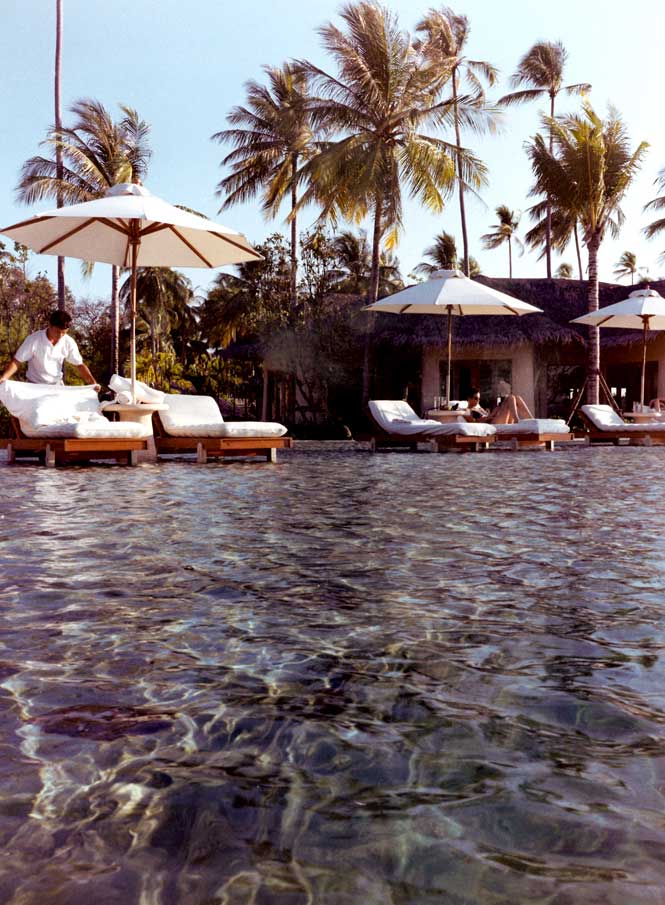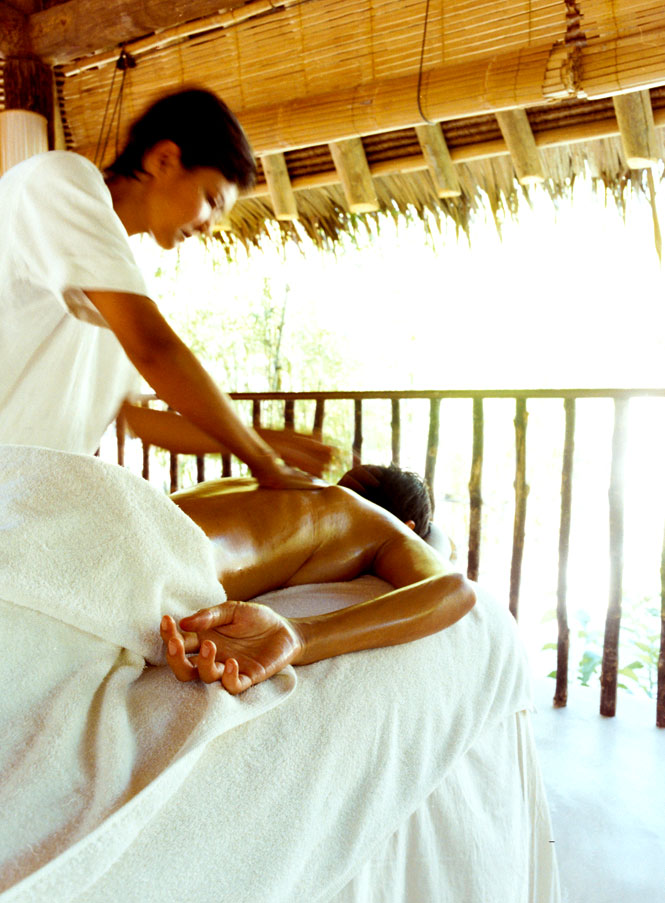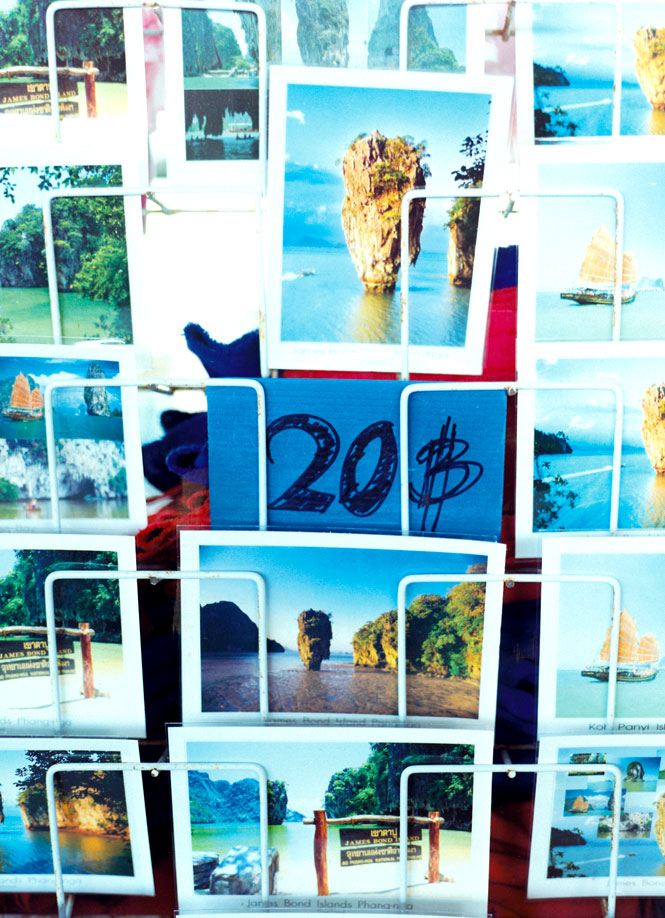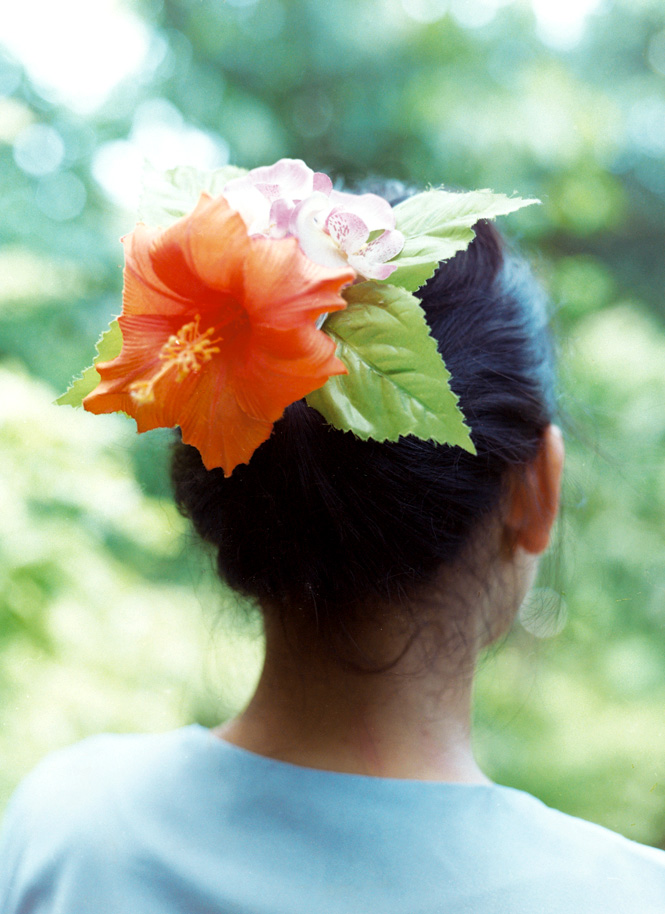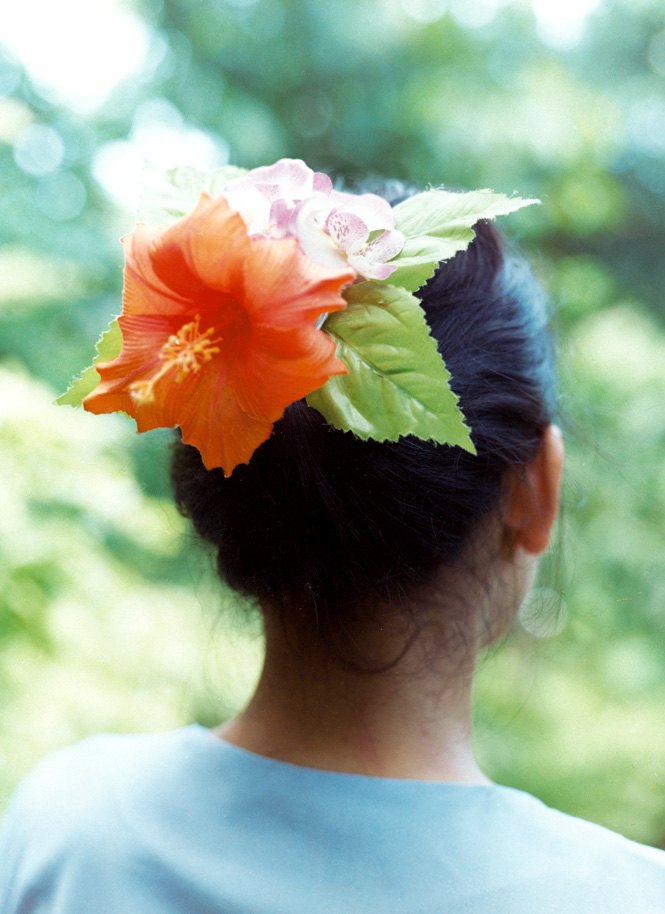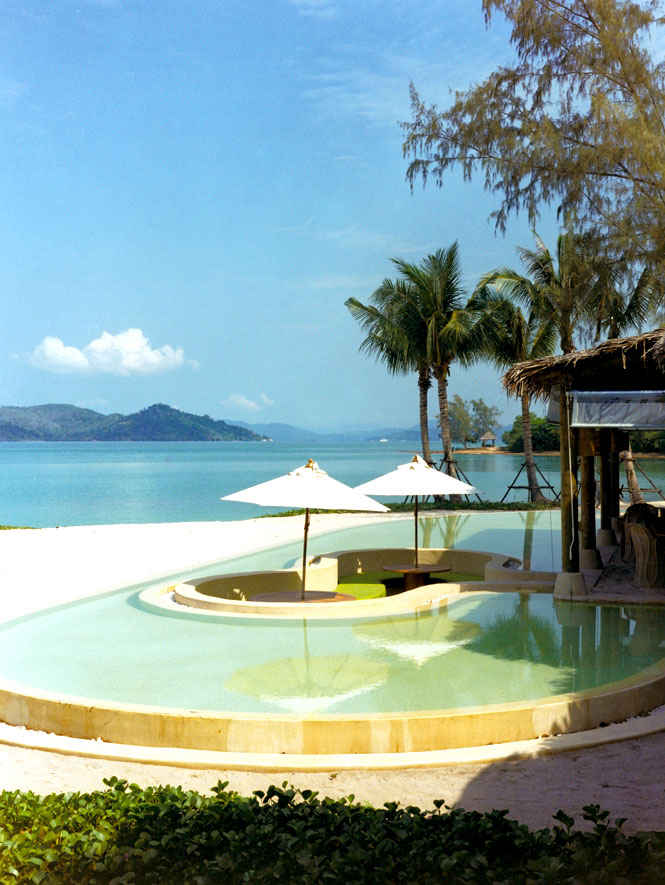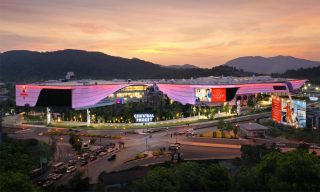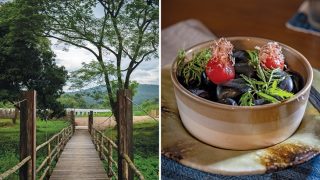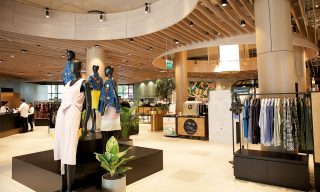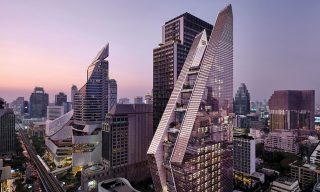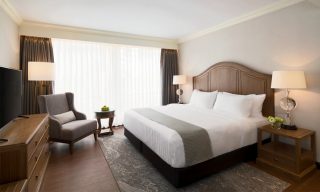Still, his home island’s specialized appeal did lure the Bangkok-based Six Senses group, which in late 2007 opened a 56-villa Hideaway resort on a headland with amazing panoramas of the bay. Some guests summon the energy to tour Koh Yao Noi on a mountain bike, though most wander no farther than the sunrise yoga platform, the full-service spa, or their villa’s private plunge pool. Clients break up their treatments with meals at the gourmet Asian-fusion and Italian restaurants, which have a 500-label wine list, or the deli with imported cheeses and meats, fresh-baked artisanal breads, and homemade durian-flavored ice cream.
Beyond the Six Senses Hideaway’s 10-hectare enclave, Koh Yao Noi maintains an old-fashioned equilibrium. Just after sundown, the disembodied voices of muezzin calling islanders to prayer float through the rubber plantations. Long after nightfall, fishermen head to sea in small, open boats. This is a place so unspoiled that hornbills still fly through town.
And there’s a bonus: When I study a map of Koh Yao Noi, I find that Koh Hong, my postcard-perfect island, is part of the offshore eye candy. I know what I have to do. I board a local longtail boat along with Mut—not the Sea Canoe proprietor, but his cousin, an island guide who carries the same nickname—and make the 10-kilometer crossing.
Above us, Brahminy kites glide on the thermals. Mut points out a sea cave on Koh Hong’s vertical western face that holds bamboo scaffolding and armed guards; the edible nests of the swiftlets inhabiting these grottoes are almost worth their weight in gold. The island’s rugged ridges seem to swell as we swing around the north point and motor through a 10-meter-wide “window” into the shallow lagoon. From a deep, sapphire blue, the sea quickly shades to lapis lazuli. The hong is as graceful as I’ve long imagined: a stand of mangroves rimmed by a natural amphitheater formed by 150-meter cliffs that echo with the shrill cries of white-bellied sea eagles and black-capped kingfishers.
The day gets even better on nearby Koh Lading, where enterprising locals hawk a trio of searing rum-and-herb potions—Hulk, Casanova, and Turn Me On—for just 20 baht a shot. A few doses of Hulk and I’m stretched out on the Lading Swing, a broad, three-meter-long plank hanging from the gnarled bough of an ancient tamarind tree, and listening to waves lap against the beach. Later, Mut takes me snorkeling off the northern tip of Koh Rai; visibility in the shallow, nutrient-rich bay is only about six meters, but it’s enough to appreciate the pristine collection of staghorn, star, and brain coral, scads of colorful butterflyfish and Moorish idols, and even a purple-and-black banded sea snake. On the return passage, the afternoon light ignites iron deposits streaking the karst mountains.
Back on Koh Yao Noi, I seek out the owner of Sabai Corner Bungalows to pay for the boat trip. Lena Vanicharoen, a native of Milan who opened the laid-back, 11-room property with her Thai husband back in 1991—the Mesozoic era for Phang-nga tourism—waves me off in the manner only an Italian can.
“In my language,” relates Vanicharoen, “we say, ‘To pay or to die, there is always time.’ ”
In others words, relax.
Well-heeled travelers are also finding relaxation on the small pearl-farming island of Koh Nakha Yai, where another venture by Six Senses has transformed 80 waterfront hectares into the group’s first destination spa. The adult-oriented property, just a five-minute speedboat ride from Phuket’s Ao Po Pier, is anchored by a spa complex offering Balinese, Thai, Indian, and Chinese treatments—everything from abdominal massages to colonics to such esoteric tune- ups as crystal therapy. There’s no meat on the menu at the raw-foods restaurant, and no TVs in any of the 61 pool villas. Mobile phones are discouraged. But this is no boot camp—not when a beachside workout with a personal trainer can be followed by a milk-and-honey spa soak or a plunge in the waterfront, infinity-edge swimming pool.
One more paradise lies at the very outer reaches of the bay. Politically part of Krabi province, the Phi Phi Islands are geological kin to Phang-nga’s limestone peaks. Once considered a destination for hard-core divers and intrepid backpackers, the islands soared in popularity after the 2000 release of The Beach, the Leonardo DiCaprio vehicle filmed extensively on Koh Phi Phi Leh, a national park. On neighboring Koh Phi Phi Don, it wasn’t long before seemingly every square meter of Ton Sai, a sandy isthmus running between two half-moon bays, was buried beneath guesthouses, restaurants, dive shops, or Internet cafés.
Everything changed the morning of December 26, 2004, when those beautiful twin bays completely drained, and then boiled over with a tsunami that sent six-meter-high waves sweeping across the terrified town.
“Many people had run out into the sea bed, which was empty, to collect the fish,” recalls Punsan Chalom, 52, a restaurant manager at beachfront PP Princess Resort who was setting up for a buffet lunch when the disaster struck. “I’m in uniform, so I cannot go. Then the water came back. It was very fast.”
The wave caught Punsan as he fled and threw him atop the hotel’s water tank. He broke his collarbone and three ribs, and remained in a coma for a week. Punsan was lucky: 59 of his coworkers and more than 100 guests died as the tsunami obliterated the resort. Several thousand people are thought to have perished on Phi Phi Don, a casualty count in Thailand second only to Khao Lak, a resort area north of Phuket where 12-meter waves roared two kilometers inland.
After the tsunami came calls for more government planning and regulation. For economic expediency, however, businesses were allowed to rebuild as quickly as possible on Phi Phi Don. Less than four years after its annihilation, Ton Sai once again resembles a backpacker ghetto with its warren of cheap guesthouses and restaurants, knock-off clothing boutiques and pirated CD and DVD vendors, and its surfeit of Thai touts and sunburned, tattooed tourists. For all that, Phi Phi Don can still be an antidote to mass tourism, especially along isolated Laem Tong Beach on the northeast tip of the island.
“Thankfully, we’re about 15 years behind Phuket as far as development goes,” says Florian Hallermann, general manager of the 52-villa Zeavola resort, set a few hundred meters up the beach from a sea-gypsy village. “It’s just too far off the beaten track.”
Travelers wash up here for the perfect tropical setting and for the spectacular diving. Ton Sai may be an eyesore, but it’s a different story below sea level. The islands count more than 30 dive sites, including the King Cruiser ferry wreck, Hin Klang reef, and the Pileh wall, a good spot to see leopard sharks.
By far the most popular boat trips feature Phi Phi Leh. The uninhabited, supernaturally scenic isle five kilometers south of Phi Phi Don attracts divers, bird’s-nest hunters, and jaded world travelers looking to be gob-smacked by the prospect of Maya Bay, The Beach’s signature beach. To appreciate this west-side cove encircled by 100-meter sea cliffs, it’s best to hire a private longtail and hit the sands before 10 a.m.; afterward, a stream of crowded tour boats arrives from Ton Sai, Phuket, Krabi, and Koh Lanta. The star coral near the mouth of the bay is showing wear and tear, although the reef fish—moon wrasse, blue-headed parrotfish, and sergeant majors—remain abundant.
Loh Samah Bay, just a five-minute walk from Maya on a sandy trail and then a squeeze through a window-sized hole in a coral wall, has even more species of fish and bigger, healthier spreads of table and brain coral. A 10-minute cruise farther up the jagged coast and my longtail slips into the long, narrow entrance of Pileh Bay. One last gorgeous hong. I snap away with my digital camera until I hear a beep; a message flashes on its display screen: CARD FULL. It seems there aren’t enough gigabytes of memory to handle the natural artistry I’m witnessing.
THE DETAILS:
Phang-nga Bay
Getting There
The most convenient access to the bay and its islands is from Phuket, where the international airport—Thailand’s second busiest—has plent of daily nonstop connections to Bangkok and other regional cities. Most ferries to Koh Yao Noi depart from Phuket’s Bang Rong Pier, a one-hour crossing. Several companies, including Andaman Wave Master (andamanwavemaster.com), sail from Phuket’s Rassada Pier for Koh Phi Phi Don; the 90-minute passage costs about US$15.
When to Go
December through March is the ideal time to visit Thailand’s Andaman coast, with little rain and daytime temperatures in the low 30s. The monsoon season in this area extends from May through October, and can mean rough seas.
Where to Stay
Six Senses Hideaway Yao Noi (56 Moo 5; 66-76/418-500; sixsenses.com; doubles from US$671) is the pearl of Phang-nga Bay, with 56 rustic-luxury pool villas, spa, gourmet dining, and superb butler and concierge service. Less than two kilometers south, Sabai Corner Bungalows (66-76/597-497; sabaicornerbungalows.com; doubles from US$29) has 11 fan-cooled waterside rooms, a restaurant, and tour-boat services.
With four different spa concepts, vegetarian and raw-foods menus, and 61 luxe pool villas, Koh Nakha Yai’s Six Senses Destination Spa Phuket (66-76/371-440; sixsenses.com; doubles from US$1,010, including full board and two daily spa treatments) rolls out totally guilt-free pampering. On Koh Phi Phi Don, the all-villa Zeavola (11 Moo 8 Laem Tong; 66-75/627-000; zeavola.com; doubles from US$195), is a favorite of upscale independent travelers. The brand-new pool villas are the pick of the bunch.
Where to Eat
If the open kitchen doesn’t hold your attention, the stream flowing beneath the glass floor of the Six Senses Hideaway Yao Noi’s gourmet Italian Dining Room will. Tucked away beyond Lam Sai Pier on the extreme southeastern point of Koh Yao Noi, Lam Sai Seafood (66-76/ 597-345) serves up sweet sea views, fiery curries, and fresh-from-the-floating-pen crab and lobster.
With candlelit tables set in the sands of Koh Phi Phi Don and a menu balancing Thai and international cuisine, Zeavola resort’s Tacada will satisfy romantics and gourmands alike. Ton Sai Seafood (129 Moo 7; 66-75/611-233), overlooking the busy waterfront in the heart of Phi Phi’s backpacker strip, justifiably boasts about its shrimp roasted with cashews in scooped-out pineapple “boats.”
What to Do
Phuket-based Sea Canoe Thailand (367/4 Yaowarat Rd.; 66-76/212-172; seacanoe.net) offers guided, small-group day trips to explore Phang-nga Bay’s magical hongs. From Koh Yao Noi’s Sabai Corner Bungalows, Adun “Mut” Sakunsan (66-81/894-7565) runs longtail boat tours of the less-touristed Koh Hong archipelago, including several snorkeling stops.
Boat tours from Koh Phi Phi Don are typically quick and crowded. For a more memorble experience, contact Sea Gypsy Diving & Tour (Laem Thong Beach; 66-84/ 991-4461) and organize a custom charter of the surrounding islands.
Originally appeared in the June/July 2009 print issue of DestinAsian magazine (“Karst Away”)


